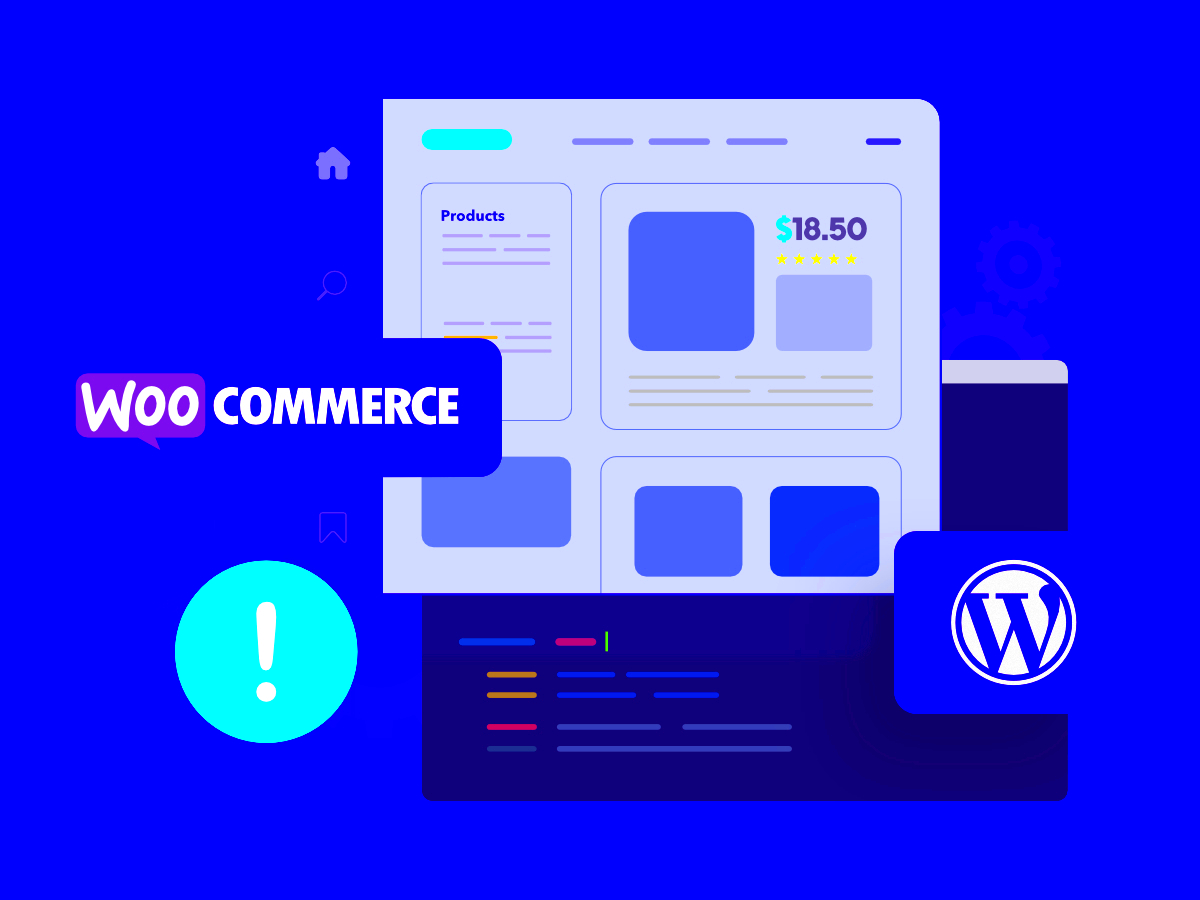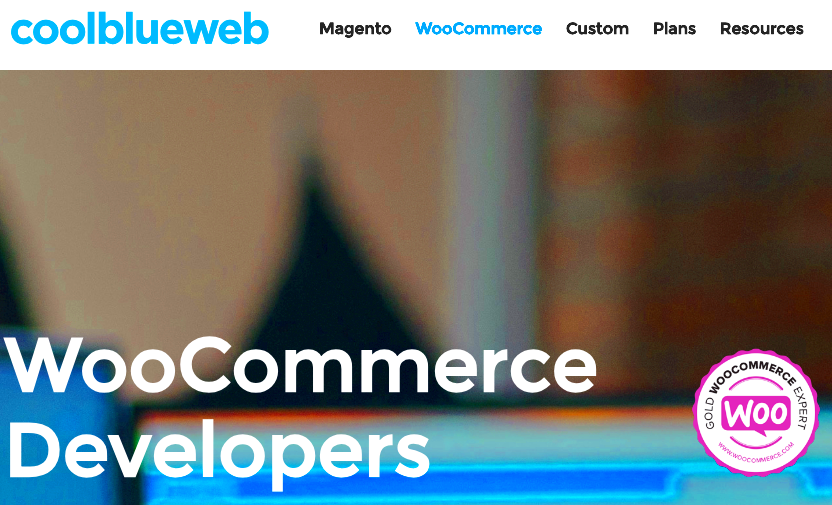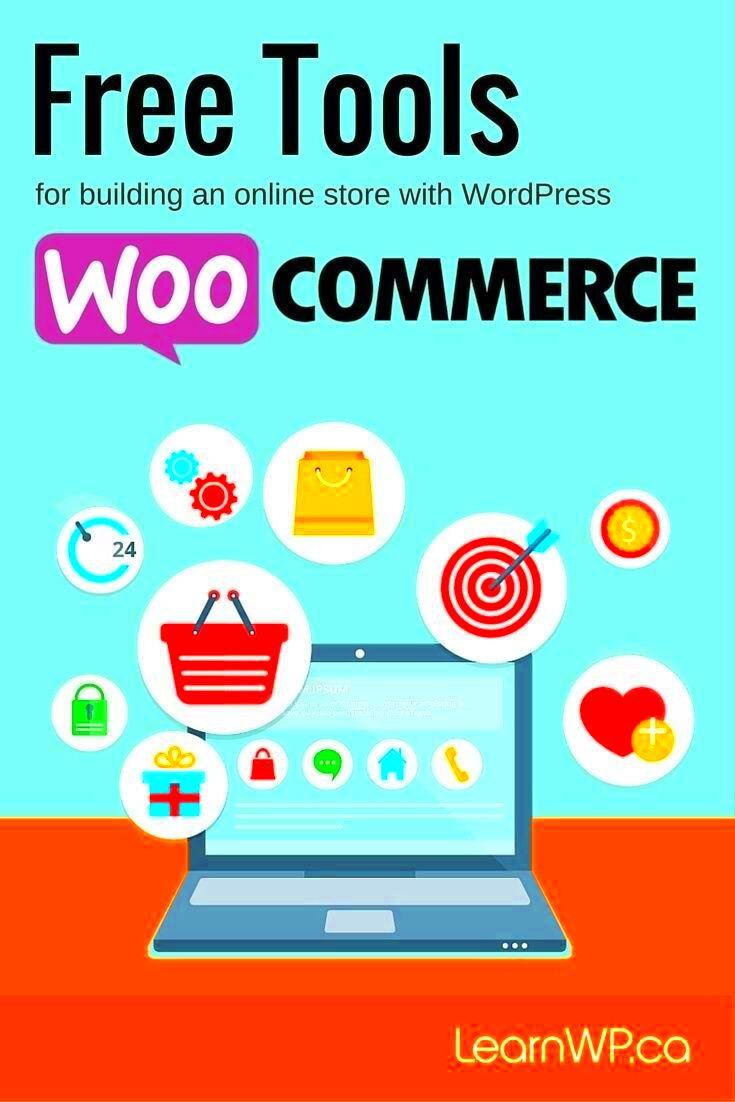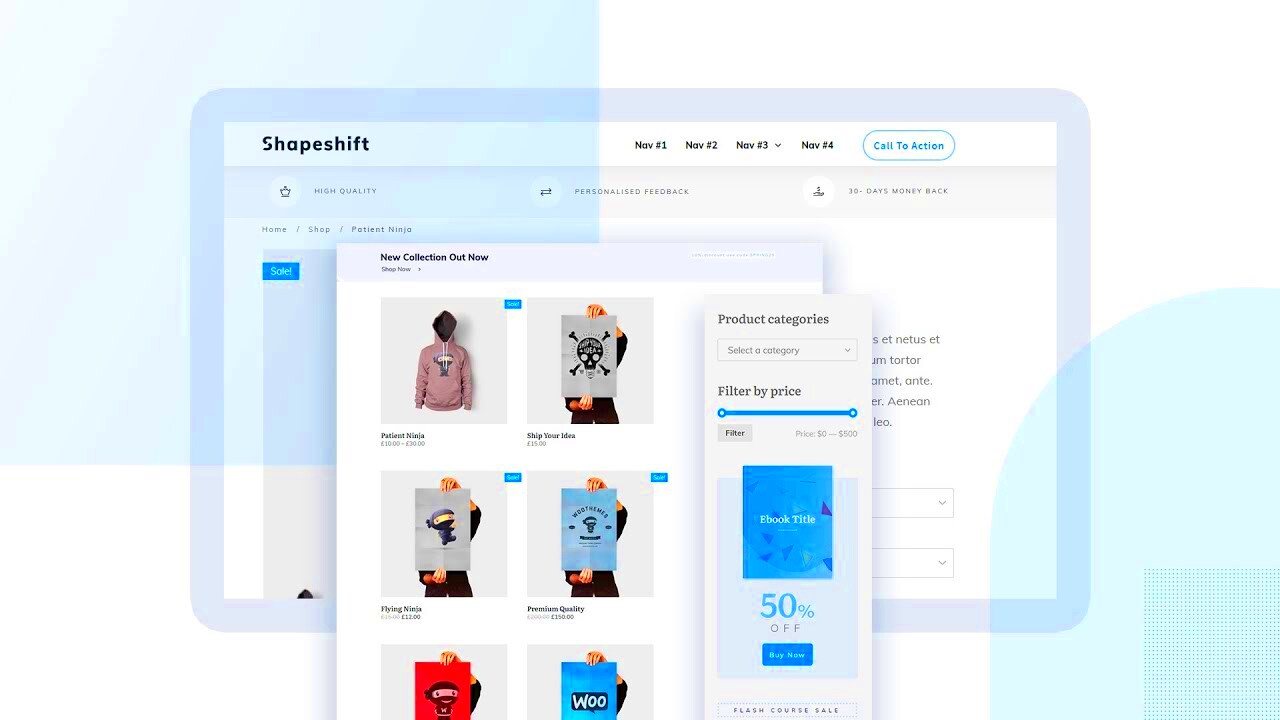Welcome to the world of WooCommerce Developer Tools! If you’re venturing into the realm of e-commerce, then you’ve probably heard of WooCommerce—a powerful plugin that transforms your WordPress site into a fully functional online store. But what’s even more exciting are the tools available to developers that can elevate your store’s performance and functionality. In this section, we’ll dive into what these tools are and how they can help you enhance your shopping platform.
Why Use Developer Tools in WooCommerce?

Using developer tools in WooCommerce is a game-changer for anyone looking to build and optimize an online store. Here’s why incorporating these tools into your development process can make a significant difference:
- Customization: WooCommerce Developer Tools allow for deep customization of your store. You can modify themes, add unique functionalities, and tailor the user experience to perfectly meet customer needs.
- Efficiency: Automating repetitive tasks and streamlining workflows can save both time and resources. Developer tools often offer shortcuts to common processes, making it easier to manage your store.
- Debugging: With built-in debugging tools, you can identify and fix issues quickly. This ensures your store runs smoothly, preventing lost sales due to glitches.
- Performance Monitoring: Many developer tools include analytics features, allowing you to track performance metrics and make data-driven decisions to optimize the store.
In short, using developer tools in WooCommerce not only improves the functionality and aesthetic appeal of your online store, but it also enhances the overall customer experience. This, in turn, can lead to higher conversion rates and customer satisfaction, making your effort worthwhile!
Essential WooCommerce Developer Tools

When it comes to building a robust and efficient WooCommerce store, having the right developer tools at your disposal is crucial. These tools not only streamline your workflow but also enhance your ability to create custom features that cater to your client’s needs. Let’s dive into some essential WooCommerce developer tools that can significantly enhance your development experience:
- WooCommerce Plugin Boilerplate: This is a great starting point for developers creating WooCommerce extensions. It provides a structured base for your plugin and ensures you follow best practices from the get-go.
- WP-CLI: The WordPress Command Line Interface (WP-CLI) allows you to manage your WooCommerce store with simple command-line commands. It can save you tons of time when executing bulk actions or managing settings.
- Xdebug: If you want to take your debugging experience to the next level, Xdebug is a must-have. It provides a detailed view of your code execution, making it easier to track down issues in your code.
- Query Monitor: This plugin is fantastic for monitoring database queries, PHP errors, hooks, and actions. It helps you identify performance bottlenecks and ensure that your store runs smoothly.
- WooCommerce REST API: The REST API allows developers to interact programmatically with WooCommerce, making it ideal for custom app development or connecting third-party applications.
These tools can make a world of difference in how you build and maintain your WooCommerce projects. Harnessing their full potential will not just save you time but will also lead to a more polished product at the end of your development journey.
Setting Up Your Development Environment

Before you can start building an impressive WooCommerce store, you need to set up a robust development environment. Think of your development environment as the playground where all your creative ideas take shape. Here’s how to ensure you set it up correctly for optimal performance:
- Choose Your Local Development Environment: Start by selecting a local development environment. Popular options include XAMPP, MAMP, and Local by Flywheel. These tools allow you to run WordPress and WooCommerce locally without needing a live server.
- Install WordPress and WooCommerce: After setting up your local server, install WordPress, and then install WooCommerce. You can do this directly through the WordPress admin panel. Just navigate to Plugins > Add New and search for “WooCommerce.”
- Set Up Version Control: Using Git for version control is a smart move. It enables you to track changes, collaborate with others, and revert to previous versions if something goes wrong.
- Install Essential Plugins: While working on your WooCommerce site, consider installing plugins like Query Monitor for debugging, WP-debugging for error logging, and any other plugins that help you simulate features of your target environment.
- Use a Code Editor: A solid code editor is essential for any developer. Popular options include Visual Studio Code, Sublime Text, or Atom. Choose one that fits your preferences and enhances your coding efficiency.
Once you’ve set up your development environment, you can dive into coding with confidence. A well-structured environment not only speeds up your development but also minimizes errors, letting you focus on what you do best: building fantastic WooCommerce stores!
Customizing WooCommerce Themes
When it comes to setting up your online store, the theme you choose can make a massive difference. A well-customized theme not only enhances the aesthetic appeal but also improves the user experience, making it easier for customers to navigate and find what they’re looking for. But how do you customize a WooCommerce theme effectively?
First, you need to choose the right theme for your business goals. There are plenty of options available, ranging from free themes to premium ones. Look for themes that are both visually appealing and optimized for WooCommerce. Once you’ve made your choice, dive into the customization options offered by the theme itself. Most themes come with a built-in customizer that allows you to adjust colors, fonts, layouts, and more without touching a single line of code.
Here are some key customization options to consider:
- Header and Footer: Customize your header to include your logo and navigation menu. The footer can include important links and your contact information.
- Product Pages: Highlight product images and descriptions by adjusting the layout. Consider adding custom tabs for additional information.
- Typography: Choosing the right fonts can enhance readability and brand consistency.
- Color Schemes: Stick to your brand colors to create a cohesive look.
Lastly, don’t forget about responsive design. Ensure your theme looks great on both desktop and mobile devices. By customizing your WooCommerce theme thoughtfully, you can build a store that doesn’t just look good but works well, providing your customers with an enjoyable shopping experience.
Utilizing WooCommerce Extensions Effectively
WooCommerce isn’t just a platform; it’s a versatile tool that can be enhanced significantly through extensions. These add-ons can help you streamline operations, improve customer engagement, and ultimately drive sales. But how do you utilize these extensions effectively to get the most out of your WooCommerce store?
First off, you have to identify your needs. Not all extensions are created equal, and choosing the right ones will depend on what you aim to achieve. Here’s a quick checklist to help you figure it out:
- Payment Options: Consider adding extensions that support varied payment methods, enhancing convenience for customers.
- Shipping Solutions: Look for inventory management tools and shipping calculators that help you streamline logistics.
- Marketing Tools: Extensions for email marketing, SEO, and social media integration can help you reach a broader audience.
- Analytics: Utilize extensions that offer advanced reporting and analytics to better understand your customers’ behavior.
Once you’ve selected the right extensions, ensure that they are compatible with your current WooCommerce setup. Compatibility issues can lead to errors, which can frustrate both you and your customers. Don’t hesitate to reach out for customer support or consult forums if you’re running into challenges.
Finally, regular updates are crucial. Just as with your theme, your extensions should be kept up to date to ensure security, new features, and compatibility with WooCommerce updates. By taking these steps, you can maximize the functionality of your WooCommerce store, making it a powerful hub for your online business.
Debugging WooCommerce Issues
Debugging is a crucial skill for a WooCommerce developer, especially when you’re aiming to build better online stores. As with any complex software, WooCommerce can sometimes encounter bugs or issues that hinder the user experience. Whether it’s a misconfigured setting or a conflict with a third-party plugin, being equipped with the right tools makes a world of difference.
First off, let’s talk about the WooCommerce Status Report. This built-in feature gives you valuable insights into your store’s configuration. You can find it by navigating to WooCommerce > Status in your WordPress dashboard. Here, you’ll see important information like PHP version, database size, and active plugins that can help identify potential conflicts.
Another handy tool at your disposal is the Log Files. WooCommerce allows you to enable logging for payment gateways and other features. This can help you pinpoint where things are going wrong. By checking these logs, you might discover if the issue is with a payment gateway, shipping method, or even custom code.
Here’s a quick list of debugging tools for WooCommerce:
- WP_DEBUG: Enable this setting in your wp-config.php file to view PHP errors.
- Query Monitor: A great plugin for monitoring database queries, PHP errors, and hooks.
- Debug Bar: Adds a debug menu to the admin bar, showing query, cache, and request information.
- Developer Console: Use browser developer tools to inspect element, check console errors, and view network requests.
With these tools in hand, debugging WooCommerce issues becomes a much more manageable task. Remember to stay patient and methodical; often, the solution is just a log file away!
Performance Optimization Tools
When building a successful WooCommerce store, performance is key. A sluggish website can lead to decreased sales and a poor user experience. Thankfully, there are various tools available to help you optimize your WooCommerce site’s performance. Let’s dive into how you can ensure your store runs smoothly and efficiently!
First and foremost, consider using a Caching Plugin. Caching stores parts of your website in a “cache” folder so they can be served quickly to users without meeting the server every time. Popular options include:
- WP Super Cache
- W3 Total Cache
- WP Rocket (premium option)
Next up is Image Optimization. Large images can bog down your site’s load time. Tools like Imagify or Smush can significantly reduce image sizes without sacrificing quality. Additionally, a Content Delivery Network (CDN) like Cloudflare or StackPath can distribute your content globally, allowing users to load your site from a server nearest to them.
| Optimization Tool | Description |
|---|---|
| Caching Plugins | Store static versions of your pages to speed up load times. |
| Image Optimization | Reduce image size without quality loss for faster loading. |
| CDN Providers | Distribute content from various server locations to improve access speeds. |
| Database Optimization Plugins | Clean up your database by deleting revisions and spam to enhance performance. |
Finally, don’t forget to regularly monitor your site’s performance using tools like Google PageSpeed Insights or GTmetrix. These resources provide helpful insights and recommendations tailored to your specific situation, making it easier for you to build a faster, better WooCommerce store.
9. Testing Your WooCommerce Store
Testing your WooCommerce store is crucial to ensure a seamless shopping experience for your customers. Think of it like a dress rehearsal before the big show. You want everything to be in tip-top shape before you let your audience in!
Here are some essential testing areas to focus on:
- Functionality Testing: Check to ensure all features of your site, including products, shopping cart, and checkout, work flawlessly. Make sure the buttons function as they should and the payment gateways process transactions smoothly.
- Usability Testing: Haven’t you ever left a site because it was just too complicated? Test your store to see how easy it is for users to navigate. Get real feedback from users if possible. Are they finding products easily? Can they complete their purchases without hassle?
- Performance Testing: Nobody likes a slow website. Use tools like GTmetrix or Google PageSpeed Insights to scrutinize your store’s loading times and optimize where necessary.
- Security Testing: Ensure your store is secure from potential threats. Test SSL certificates, and stay updated with the latest security practices to keep your customers’ data safe.
- Cross-browser Testing: Your customers could be using any number of browsers and devices. It’s essential to verify that your store looks and functions well across different platforms.
Remember, the more thoroughly you test, the better your store will perform. Keep track of any issues you find so you can address them promptly!
10. Best Practices for WooCommerce Development
When it comes to WooCommerce development, adhering to best practices can save you countless headaches down the line. Think of these best practices as the golden rules for crafting a successful e-commerce site.
- Choose a Reliable Hosting Provider: Your hosting choice impacts your store’s speed and reliability. Investing in a well-reviewed, specialized hosting provider can go a long way in ensuring your site performs well.
- Keep WooCommerce and WordPress Updated: New updates not only bring exciting new features but also critical security patches. Regular updates are essential for the smooth running of your store.
- Optimize for Speed: Slow loading times can lose you customers. Compress images, utilize caching plugins, and minimize code to enhance performance.
- SEO Best Practices: SEO may seem daunting, but it increases visibility. Use relevant keywords, optimize product descriptions, and ensure easy navigation to help improve search rankings.
- Responsive Design: More shoppers are buying on mobile devices than ever before. Make sure your store is mobile-friendly by testing responsiveness on various devices.
- Regular Backups: Data loss can happen in the blink of an eye. Ensure you have a reliable backup system in place, so you can quickly recover from any mishaps.
By following these best practices, you’re setting the foundation for a functional, fast, and user-friendly WooCommerce store. So, roll up your sleeves and get started—your future customers will thank you!
WooCommerce Developer Tools: Build Better Stores
Building an online store with WooCommerce can be an enriching experience, but to truly elevate your store’s performance, it’s essential to harness the right developer tools. Having the right toolkit not only streamlines the development process but also enhances your ability to customize and optimize your WooCommerce storefront. Here are several essential categories and tools that can help you build better stores:
1. Development Tools
- Visual Studio Code: A powerful code editor that supports multiple programming languages and has a vast array of extensions.
- PHPStorm: An integrated development environment (IDE) specialized for PHP development, ideal for building WooCommerce extensions.
2. Testing Tools
- PHPUnit: A testing framework specifically for PHP to ensure your code works as expected.
- Behat: A behavior-driven development (BDD) framework that helps with functional testing.
3. Performance Monitoring Tools
| Tool | Description |
|---|---|
| Google PageSpeed Insights | Analyzes the content of your web pages and generates suggestions to make them load faster. |
| GTmetrix | Provides a detailed report on your website’s speed and performance, along with recommendations for improvement. |
4. Design Tools
- Figma: A cloud-based design tool that allows for collaborative site design.
- Adobe XD: Ideal for wireframing and prototyping your WooCommerce store.
In conclusion, utilizing these WooCommerce developer tools will streamline your development process, bolster performance, and ensure a superior user experience in your online store. With the right strategies and tools, you can build a platform that not only meets but exceeds customer expectations.



